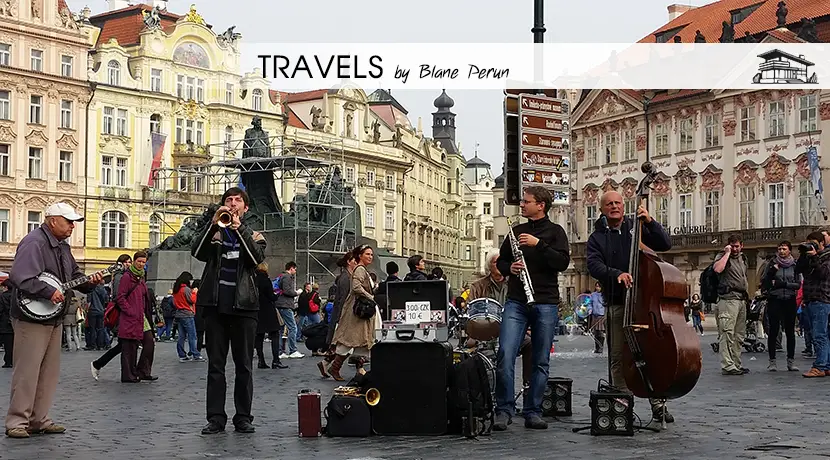Prague Architecture & Interior Design
Unveiling the Charms of Prague: A Deep Dive into Its Architecture and Design
Nestled in the heart of Europe, Prague is not just a city but a living canvas that narrates centuries of history, culture, and artistic evolution through its stunning architecture and design. The essence of Prague Architecture & Design is an intricate tapestry woven from the threads of Gothic, Baroque, Art Nouveau, and Cubist styles, among others, making it a fascinating study for anyone with even a passing interest in the built environment. This article takes you on a journey through the architectural marvels of Prague, exploring the unique blend of history, art, and innovation that sets this city apart.

Historical Foundations and Modern Innovations
The Gothic Grandeur of Prague
The Gothic architecture in Prague is not just about the pointed arches and ribbed vaults; it’s a testament to the city’s resilience and artistic fervor during the medieval period. The St. Vitus Cathedral, with its soaring spires and intricate stained glass, stands as a pinnacle of Gothic design, embodying the spiritual and cultural aspirations of the era. This architectural style, characterized by its emphasis on verticality and light, plays a crucial role in Prague’s cityscape, inviting onlookers to ponder the celestial.
Cubism: Prague’s Unique Contribution
Unlike any other city, Prague boasts a distinctive collection of Cubist architecture, a style usually reserved for paintings and sculptures. Buildings like the House of the Black Madonna, with its sharp angles and fragmented surfaces, challenge traditional perspectives on form and space. This architectural movement, flourishing in the early 20th century, mirrors the city’s avant-garde spirit, merging geometric forms with functional design in a way that is both provocative and harmonious.
Bridging the Old with the New
The Renaissance Rebirth
The Renaissance period brought a wave of humanism and revival of classical antiquity to Prague architecture, marking a departure from the Gothic’s verticality to embrace harmony, proportion, and balance. Structures such as the Schwarzenberg Palace exemplify the Renaissance flair for symmetry and detail, with sgraffito decorations that narrate tales of mythology and history. This era in Prague’s architectural timeline signifies a blending of intellectual rigour with artistic expression.
Art Nouveau’s Whimsical Elegance
As the city transitioned into the 20th century, Prague embraced Art Nouveau, a movement that infused architecture with organic lines, natural forms, and intricate decorative elements. The Municipal House, a prime example, showcases the elegance and fluidity of Art Nouveau through its ornate facades and sumptuous interiors, reflecting a cosmopolitan ethos intertwined with local craftsmanship. This style’s integration into Prague’s architectural lexicon speaks to the city’s openness to innovation and beauty in all its forms.
The Contemporary Scene: Fusion and Sustainability
Prague’s Architectural Renaissance
Today’s Prague is experiencing a renaissance in architectural thought and practice, with contemporary architects weaving sustainability and innovation into the city’s historic fabric. Projects like the Dancing House, co-designed by Frank Gehry, illustrate this dynamic interplay between form and function, tradition and modernity, making Prague a canvas for architectural experimentation and dialogue.
Sustainable Design and Green Architecture
In response to global environmental challenges, Prague is increasingly focusing on sustainable design and green architecture, incorporating energy-efficient materials, green roofs, and eco-friendly technologies into its urban development projects. This shift not only reflects Prague’s commitment to environmental stewardship but also its vision for a future where design and sustainability converge to create livable, resilient urban spaces.
Prague Architecture & Design is more than just a collection of buildings; it’s a narrative of cultural evolution, a dialogue between the past and the present, and a testament to the city’s enduring spirit of creativity and innovation. Whether you’re an architecture aficionado or a curious traveler, Prague offers a unique lens through which to explore the complexities and beauty of human expression through the built environment.

FAQs on Prague Architecture & Design
What makes Prague’s architecture unique?
Prague’s architecture is unique due to its diverse range of styles, from Gothic and Baroque to Cubist and Art Nouveau, all coexisting harmoniously within the city. This eclectic mix not only reflects Prague’s rich historical tapestry but also its continuous evolution and openness to avant-garde movements, making it a living museum of architectural innovation.
How has Prague’s history influenced its architecture?
Prague’s tumultuous history, marked by imperial rule, wars, and revolutions, has deeply influenced its architecture. Each era left its imprint, from the Gothic cathedrals symbolizing medieval spiritual aspirations to the Cubist buildings reflecting early 20th-century avant-garde trends. This historical layering gives Prague a unique character, where stories of the past are etched into the cityscape.
Can you find modern architecture in Prague?
Yes, Prague is home to striking examples of modern architecture that stand in contrast yet in dialogue with its historic buildings. The Dancing House is a notable example, showcasing contemporary design principles and innovative use of materials. Prague’s modern architecture contributes to the city’s dynamic and evolving architectural landscape.
What role does sustainability play in Prague’s contemporary architecture?
Sustainability is becoming increasingly central to Prague’s contemporary architecture, with a growing focus on eco-friendly materials, energy efficiency, and green spaces. This shift towards sustainable design reflects a broader global trend and demonstrates Prague’s commitment to creating a resilient, environmentally conscious urban environment.
How does Prague Architecture & Design contribute to the city’s cultural identity?
Prague Architecture & Design is integral to the city’s cultural identity, encapsulating its history, artistic achievements, and societal values. The city’s architectural diversity and innovation serve as a backdrop to everyday life, influencing how residents and visitors experience Prague, from its historical depth to its contemporary vibrancy. This rich architectural tapestry is a key aspect of what makes Prague uniquely captivating on the global stage.





